Recent Articles
Popular Makes
Body Types
10 Things You Need to Know About the 2017 Volkswagen e-Golf
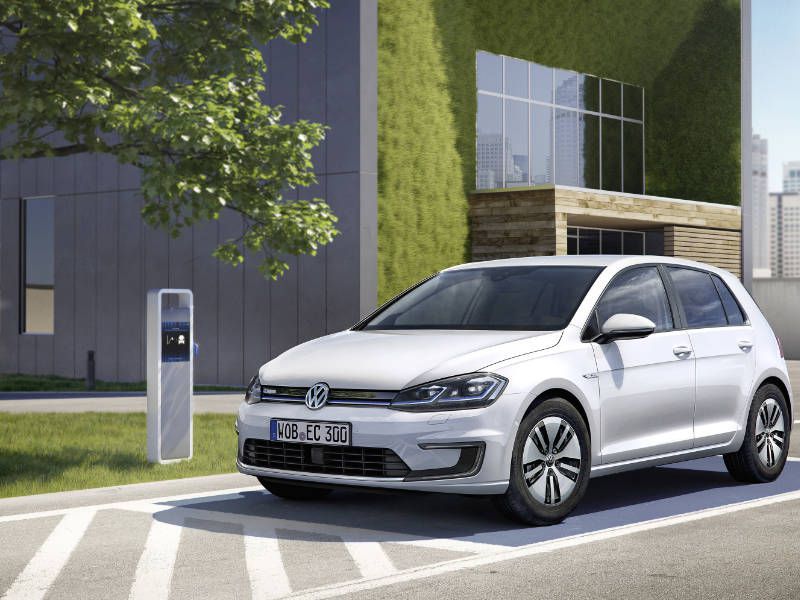
2017 VW e Golf Charging Station Parked Hero ・ Photo by Volkswagen
The 2017 Volkswagen e-Golf is the all-electric version of the company’s Golf hatchback, and it’s been revised and updated for the new model year. Here are ten things you need to know about the 2017 Volkswagen e-Golf.
1) The Volkswagen e-Golf now has more range.
The big change for the 2017 Volkswagen e-Golf is an increase in range. It now has an EPA-certified range of 126 miles, a big step up from the 83-mile range of the 2016 model. This new range gives it a distinct advantage over competitors like the Kia Soul EV (93 miles) and Nissan LEAF (107 miles with an optional battery), and a slight advantage over Hyundai’s upcoming Ioniq Electric (124 miles) -- though it still falls short of the 238-mile Chevrolet Bolt. With electric vehicles, real range varies on driving conditions; slow traffic and moderate temperatures help it, while high speeds and extreme heat or cold hurts it. We test-drove the 2017 e-Golf on a warm day in Southern California, and even with the air conditioning running (and aided by stop-and-go traffic), our e-Golf was on track to run well over 140 miles on a battery charge.
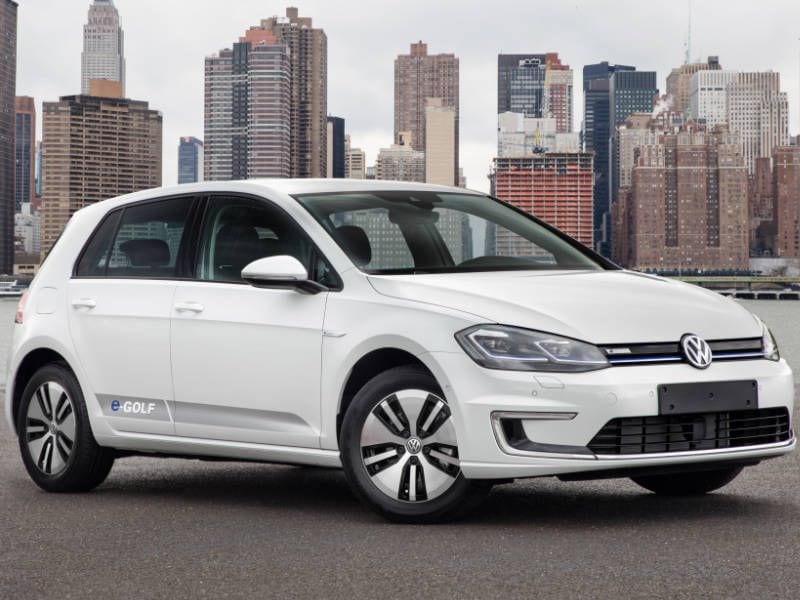
Photo by Volkswagen
2) The battery is unchanged from 2016.
You’d expect bigger range to come courtesy of a bigger battery, but in fact the e-Golf’s lithium-ion battery, from a hardware perspective, is unchanged. Instead, Volkswagen made changes to the energy management system that controls the battery, upping its capacity from 24.2 kWh (kilowatt hours) to 35.8 kWh.
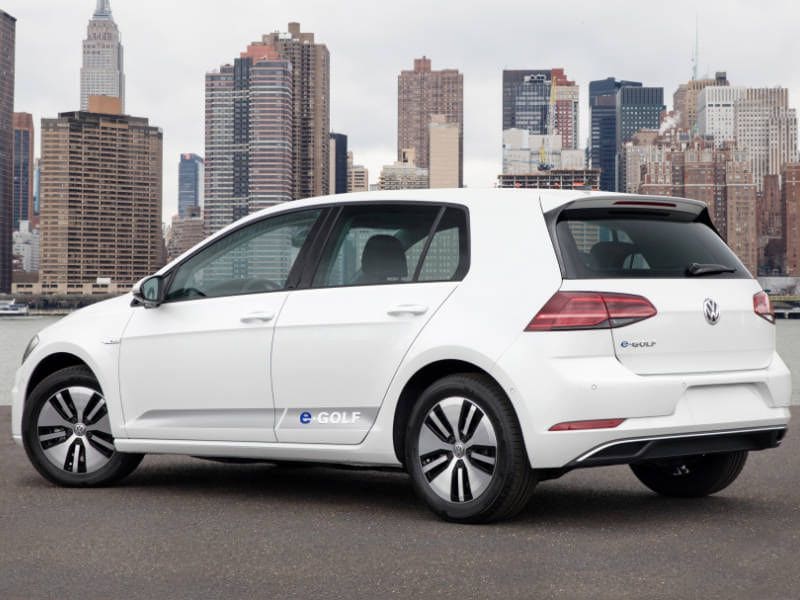
Photo by Volkswagen
3) The 2017 Volkswagen e-Golf gets a bigger motor.
The range increase comes despite the fitting of a more powerful motor: A 100kW (134 hp) motor that replaces the old 85kW (115 hp) unit. Volkswagen says the new e-Golf is quicker — 0-60 in 9.6 seconds, though they don’t have an official figure for the 2015-2016 models — though top speed decreases slightly, from 87 mph to 85 mph.
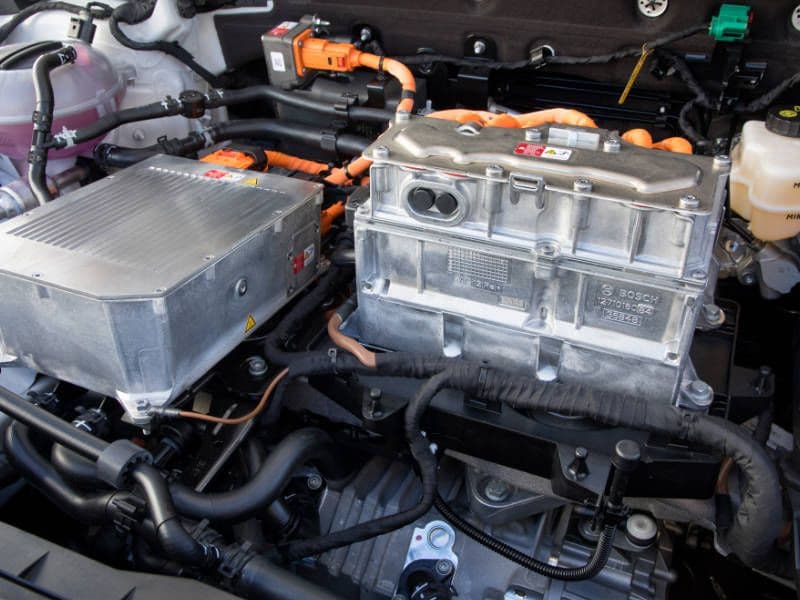
Photo by Volkswagen
4) The 2017 VW e-Golf has new and better charging equipment.
For 2017, all e-Golfs get a 7.2 kW on-board charger, as opposed to the 6.6 kW unit found in the old e-Golf and many of its competitors. The higher-capacity charger provides charge times of six hours or less using a 240-volt Level 2 charger. DC fast charging, which can juice an empty battery to 80% capacity in less than an hour, is standard in all but the base-model e-Golf.
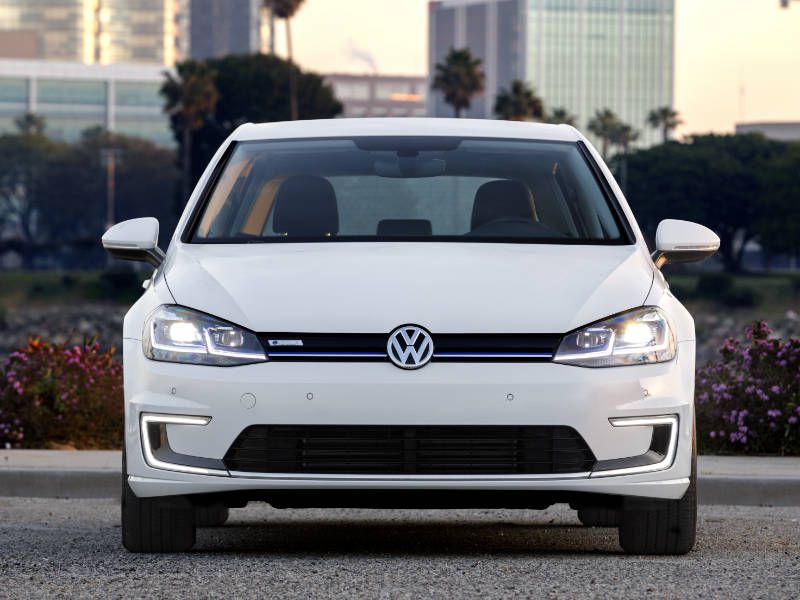
Photo by Volkswagen
5) The e-Golf shows off new styling changes and safety equipment for the Golf family.
Volkswagen plans some updates to the styling of the Golf, and the e-Golf is the first version to show off the changes. They’re subtle: The bumpers, front fenders, headlights and grille are new, as is the seat fabric. Top-of-the-line SEL Premium models get a digital dashboard, along with adaptive cruise control, automatic braking, and automatic high beams.

Photo by Volkswagen
6) Volkswagen has a new mid-range model of the e-Golf.
Volkswagen previously offered the e-Golf in two models, SE and SEL Premium. For 2017, there’s a third option, called "the Limited Edition." It fits between the two other models, and adds V-Tex (imitation leather) upholstery, parking assistance, an auxiliary heat pump, and, most importantly, the ability to use DC fast chargers.
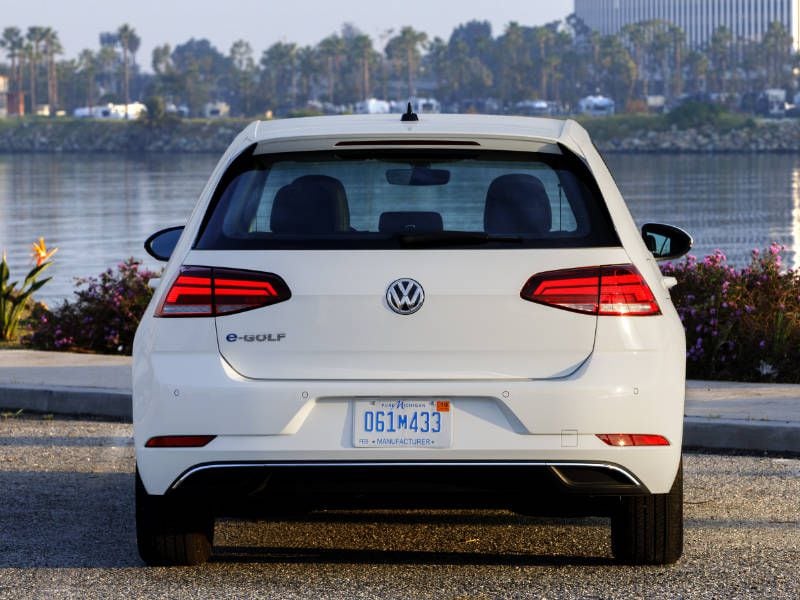
Photo by Volkswagen
7) If you’re looking for a “normal” electric car, you’re going to like the e-Golf.
What we like best about the e-Golf is that it’s so easy to forget you are driving an electric car. Once you get over the novelty (especially the smooth, silent rush of acceleration), the e-Golf begins to feel like any other family vehicle, and the underfloor battery pack has a negligible effect on interior space. If you want to show the world how green you are, you’re probably better off with something showy like a Tesla or a BMW i3. But if you want a car that is both eco-friendly and practical, the e-Golf is the way to go.
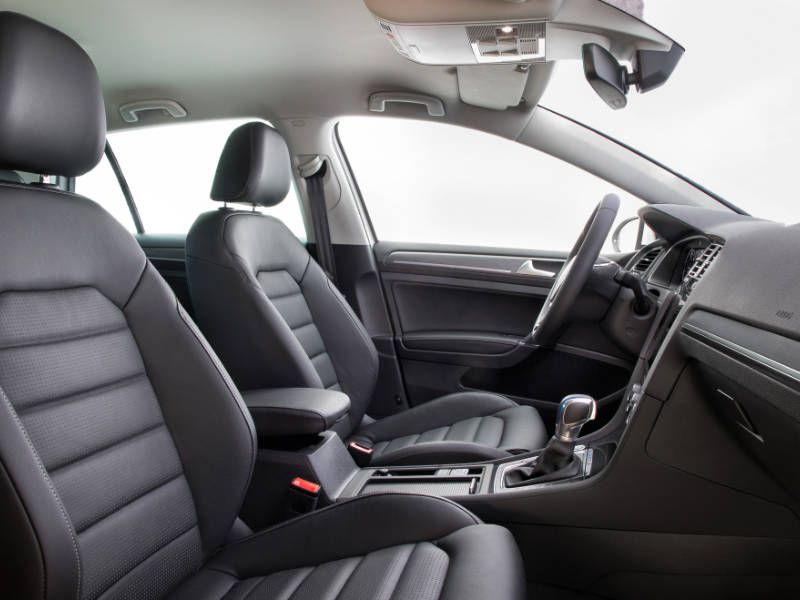
Photo by Volkswagen
8) The e-Golf is efficient, even by electric car standards.
With running costs so much lower than gasoline cars, it’s easy to forget that some electric cars are more efficient than others. The EPA rates the energy usage of electric cars by MPGe (Miles Per Gallon Equivalent), and the e-Golf is pretty efficient: Its combined city/highway figure is 119 MPGe (up from 116 MPGe in last year’s e-Golf). That’s a pretty good number—better than the Kia Soul Electric (105 MPGe), FIAT 500e (112 MPGe), Nissan LEAF (112 MPGe) and the Tesla Model S (95-104 MPGe ) and Model X (86-93 MPGe), though it still trails the BMW i3 (124 MPGe) and Hyundai Ioniq Electric (136 MPGe).
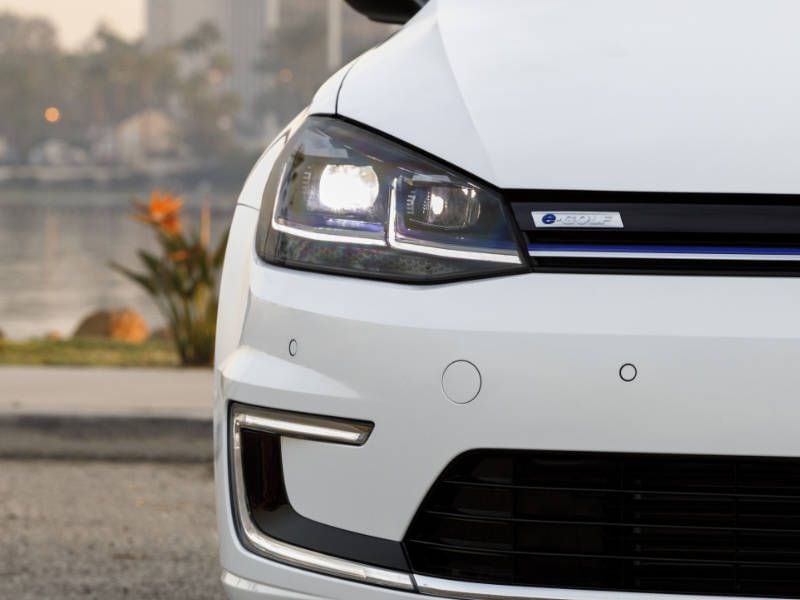
Photo by Volkswagen
9) Volkswagen only offers the e-Golf in ten states and DC.
Unfortunately, Volkswagen only offers the e-Golf in states that comply with California emissions: California, Connecticut, Maine, Maryland, Massachusetts, New Jersey, New York, Oregon, Rhode Island, Vermont, and Washington, DC. You’re welcome to buy an e-Golf and ship it wherever you wanted, but VW dealers in other states may not be able to service the car. When we asked a Volkswagen exec what happens if you ship your e-Golf to another state — say, Iowa — and need to have warranty repairs made, she wasn’t able to tell us. Theoretically, Volkswagen should be responsible, but there could be some hassle involved.
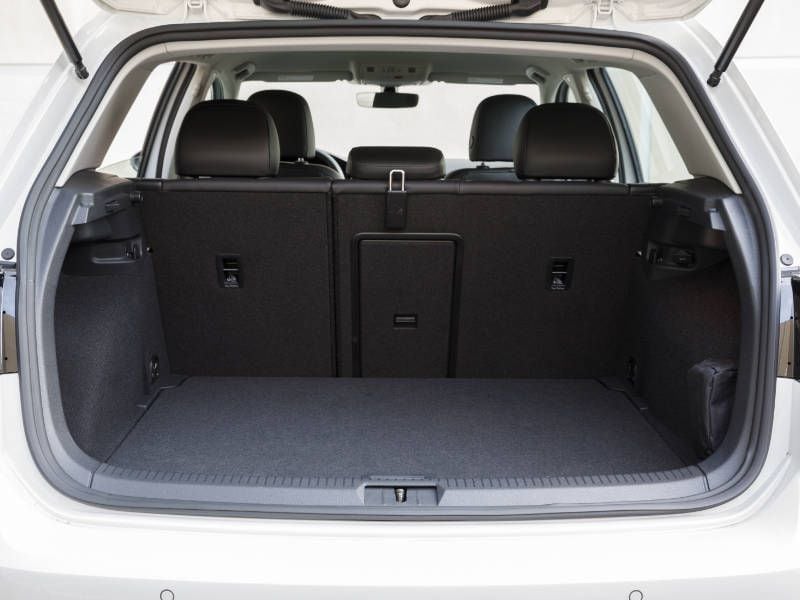
Photo by Volkswagen
10) The e-Golf will likely trade range for price.
By far, the e-Golf’s strongest competitor will be the Chevrolet Bolt, which has an EPA-rated range (238 miles), which nearly doubles the e-Golf's 125 miles of range. What we don’t know yet for e-Golf is the price; VW had not announced it at the time of our press drive. 2016 models were priced at $29,815, which drops to $22,315 after the $7,500 Federal tax credit. That would make it nearly $8,000 cheaper than the Chevrolet Bolt — a good price advantage that makes up for the range difference. Most EV drivers charge at home, and the average American drives less than 40 miles per day. If the 2017 model stays in the same price range, even with its added driving range, it’ll remain a worthy competitor to the Bolt.
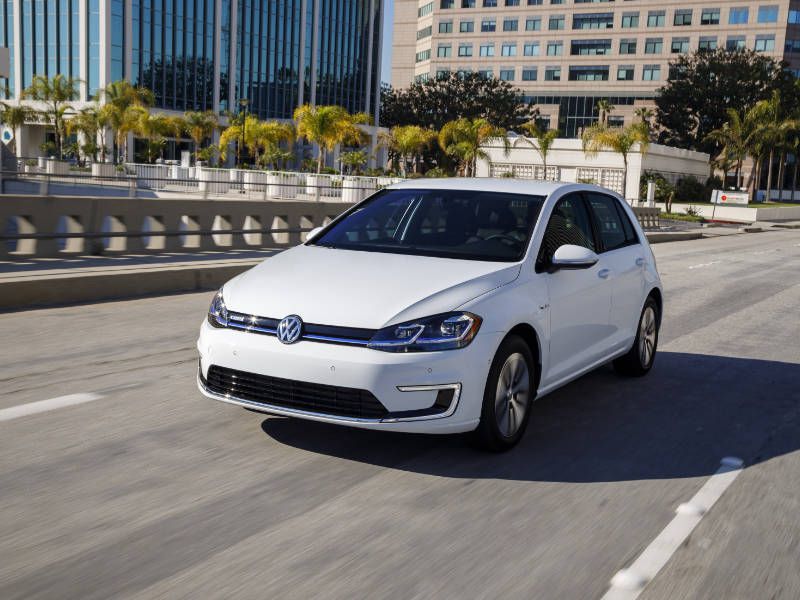
Photo by Volkswagen